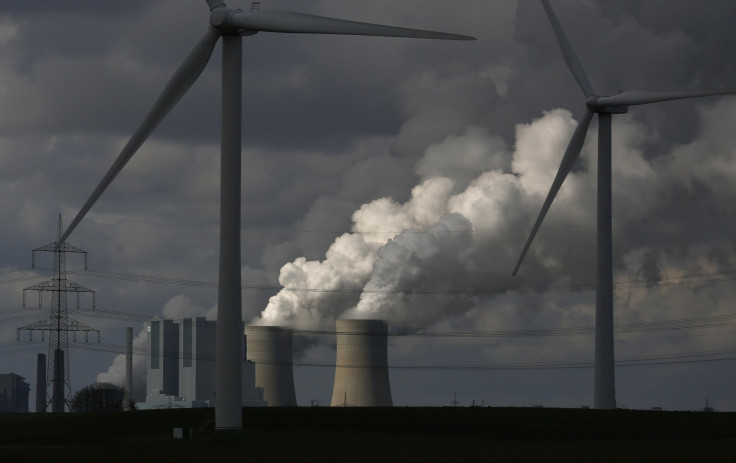How Obama Plans To Cut US Greenhouse Gas Emissions And Meet New Climate Change Targets

President Barack Obama on Wednesday unveiled stricter targets for reducing America's greenhouse gas emissions as part of a landmark climate change deal with China. At a summit in Beijing, Obama set a goal of cutting emissions to 28 percent below 2005 levels over the next decade, a number he called both "ambitious" and "achievable."
The president didn't spell out precisely how the United States would achieve that 28-percent cut. But he did point to a handful of existing proposals that could create significant reductions in carbon dioxide, methane and other harmful greenhouse gases. Climate policy experts agree that the measures --if enacted and strengthened-- could help America reach its near-term climate goals. The specific policies include:
· Clean Power Plan: The U.S. Environmental Protection Agency in June proposed to cut emissions from existing power plants to 30 percent below 2005 levels by 2030. Under the rules, states would be required to create their own plans for meeting the target. In some states, that could mean swapping aging coal-fired power plants with lower-carbon natural gas facilities, or installing more renewable energy projects like solar arrays and wind farms. Other states might opt to upgrade older nuclear power plants, which don’t emit carbon dioxide, or renovate factories to be more energy-efficient. The EPA is expected to finalize the Clean Power Plan next June. But Jake Schmidt, who directs the international program at the Natural Resources Defense Council, said the plan isn’t strong enough yet to help meet Obama’s new emissions reductions goals. “You can only meet these targets if you do even more in the power sector than what they currently propose,” he said in an interview.
· Methane Standards: The EPA and U.S. Department of the Interior are considering new regulations and programs to limit harmful emissions of methane, which come primarily from natural gas and frequently leak into the atmosphere when oil and gas is drilled or piped. The agencies are expected to wrap up work on those regulations by 2016. Finalizing and enforcing these rules would have significant climate impacts. Methane has a global warming effect around 20 times greater than carbon dioxide per amount of gas, and it accounts for about 9 percent of total U.S. greenhouse gas emissions, according to federal data.
· Cleaner Cars: The Obama administration recently adopted fuel-efficiency standards for cars and light-duty trucks, which require that all models in 2025 and beyond get an average of 54.5 miles per gallon of gas. In February, the president ordered the EPA and National Highway Traffic Safety Administration to come up with similar standards for medium- and heavy-duty trucks by March 2016. Those fuel-saving standards will add important reductions to the transportation sector, which accounts for about 30 percent of total U.S. greenhouse gas emissions. Although heavy-duty trucks make up only 4 percent of the vehicles on the road, they account for about one-fifth of total carbon emissions from transportation and guzzle up one-fifth of on-road fuel, according to the Obama administration.
· Refrigerant Limits: Hydrofluorocarbons, the chemicals used in refrigerators, air conditioners and foam insulation, are another threat to the climate. The pollutants are super-potent in the atmosphere, and they’re growing at a rate of around 10 to 15 percent a year as consumers buy more HFC-laden products. In July, the EPA proposed a rule to prohibit the use of the most dangerous HFCs and force companies to switch to newer, cleaner alternatives. The restrictions would be phased in over the next few years and target particular products, including motor vehicle A/C units, supermarket refrigerators and plastic foam product like packaging materials. If adopted, the EPA says the rules could reduce up to 42 million metric tons of carbon dioxide equivalent by 2020 -- an amount equal to the all the carbon produced by annual electricity use from 5 million homes.
Even if these policies are adopted, however, they won’t be enough to reduce America’s emissions beyond Obama’s 28 percent goal, Bob Perciasepe, president of the Center for Climate and Energy Solutions in Washington, D.C., said by phone. Global climate scientists agree that countries should reduce their emissions to 80 percent below pre-industrial levels by 2050 -- a target that requires dramatic policy changes and a significant scale-down in the use of coal, oil and natural gas.
“There’s a lot more to do, through the middle of the century,” he said. “Ultimately there will be a need for national legislation,” including a bill that places a price on carbon dioxide emissions, which would make it more expensive to extract and burn fossil fuels.
But Perciasepe said that reducing emissions over the next 10 years could make a broader climate change policy more palatable to American lawmakers. By demonstrating that policies can work, “It puts us in a better position to talk about how do we take the next step?” he said.
© Copyright IBTimes 2024. All rights reserved.











